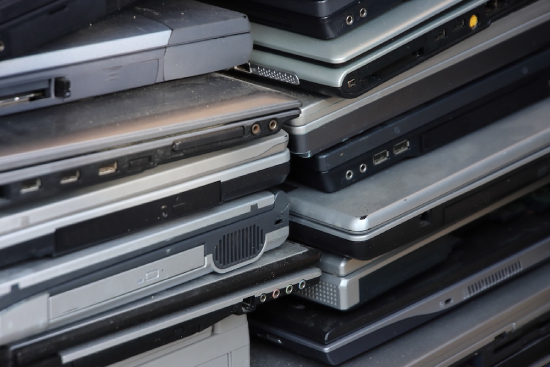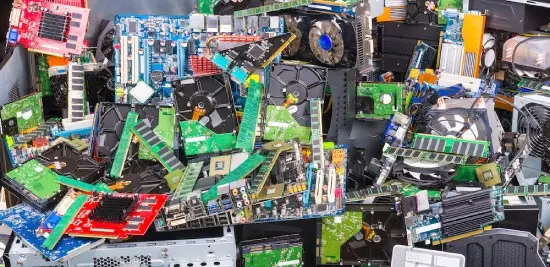
There are several key considerations when it comes to IT recycling, including the following:
- Ensuring that all data is securely erased from the device. This is important because you want to protect sensitive information and prevent it from falling into the wrong hands.
- Selecting a reputable and certified recycling company. This will ensure that the company follows best practices for recycling and properly disposes of any hazardous materials.
- Considering the environmental impact of the recycling process. This includes choosing a recycling company that uses eco-friendly methods and minimizes the carbon footprint of the recycling process.
- Investigating any potential legal requirements or regulations. Depending on where you are located, there may be specific laws or regulations governing the disposal of electronic waste, and it’s important to make sure you are in compliance.
- Making sure that any usable equipment is donated or reused, rather than being sent to a landfill. This helps to reduce waste and can provide valuable resources to those in need.
With that in mind, the most important thing to consider in IT recycling is ensuring that the process is done safely and responsibly, both for the environment and for the protection of sensitive information.
How do can you ensure all data is securely erased from an electronic device?
One way to ensure that all data is securely erased from an electronic device is to use a data erasure tool, also known as a data sanitisation or data wipe tool. These tools are designed to securely erase all data from a device, including any operating system files, user data, and deleted files.
To use a data erasure tool, you typically need to connect the device to a computer and then run the tool on the device. The tool will then overwrite all of the data on the device with random data, making it impossible to recover the original data.
Some data erasure tools even allow you to choose the level of data sanitisation, such as a basic wipe or a more thorough wipe that meets government or industry standards for data erasure.
It’s always best to consult a professional company when seeking to destroy data to make sure that it is completely removed and done so in the correct way.
With that in mind, it’s always best to look for a recycling company that has the correct certifications in place, in fact. Many UK businesses will include the requirement in their policies to only work with companies that hold the right certifications.
IT Recycling Company Certifications
In the UK, IT recycling companies typically have one or more of the following certifications:
- The Waste Electrical and Electronic Equipment (WEEE) Regulations require IT recycling companies to be registered with the Environment Agency as an approved Authorized Treatment Facility (ATF).
- The ISO 14001 standard is a widely recognized environmental management system (EMS) standard that specifies requirements for organizations to develop and implement a framework for managing their environmental responsibilities.
- The ISO 27001 standard is an information security management system (ISMS) standard that specifies requirements for organizations to manage and protect sensitive information.
- The ISO 9001 standard is a quality management system (QMS) standard that specifies requirements for organizations to develop and implement a framework for ensuring their products and services meet customer requirements.
These certifications help to ensure that IT recycling companies in the UK operate in a safe, secure, and environmentally responsible manner.
Which laws and legislation govern IT Recycling in the UK?
 We’ve talked about certification, but what are the legalities incolved? In the UK, the Waste Electrical and Electronic Equipment (WEEE) Regulations are the primary laws and legislation that govern IT recycling. These regulations require producers of electrical and electronic equipment (EEE) to take responsibility for the environmental impact of their products, including their disposal.
We’ve talked about certification, but what are the legalities incolved? In the UK, the Waste Electrical and Electronic Equipment (WEEE) Regulations are the primary laws and legislation that govern IT recycling. These regulations require producers of electrical and electronic equipment (EEE) to take responsibility for the environmental impact of their products, including their disposal.
Under the WEEE Regulations, producers of EEE must register with the Environment Agency as Approved Authorized Treatment Facilities (ATFs) and must finance the collection, treatment, and recovery of waste EEE. The regulations also require IT recycling companies to be registered as ATFs and to follow certain technical and environmental standards when treating and disposing of waste EEE.
In addition to the WEEE Regulations, IT recycling companies in the UK must also comply with a range of other laws and regulations, including health and safety laws, environmental protection laws, and data protection laws. These laws and regulations help to ensure that IT recycling is carried out in a safe, secure, and environmentally responsible manner.
How can Recycling IT Equipment help the environment?
Recycling IT equipment can help the environment in several ways. First, recycling allows valuable materials, such as metals, plastics, and glass, to be recovered and used to make new products, reducing the need to extract and process raw materials. This can help to conserve natural resources, reduce energy use, and reduce air and water pollution.
Furthermore, recycling IT equipment can help to reduce waste and prevent potentially hazardous materials, such as heavy metals and flame retardants, from entering the environment. This can help to protect ecosystems and human health.
Lastly, recycling IT equipment can also help to reduce greenhouse gas emissions. Manufacturing new products from virgin materials typically generates more greenhouse gas emissions than recycling existing materials, so recycling IT equipment can help to reduce the overall carbon footprint of the economy.
So recycling IT equipment can help to protect the environment by conserving natural resources, reducing waste and pollution, and reducing greenhouse gas emissions. It really is a no-brainer when it comes to making a decision about recycling.
What happens to IT equipment when it is recycled?

When IT equipment is recycled, it typically goes through several steps to recover valuable materials and safely dispose of any hazardous components.
The first step in the recycling process is to collect and transport the IT equipment to a recycling facility. At the facility, the equipment is sorted and separated into different types, such as computers, printers, and smartphones.
Next, the equipment is disassembled to remove any valuable materials, such as metals, plastics, and glass. These materials are then cleaned, processed, and sold to manufacturers who use them to make new products.
Any hazardous materials, such as batteries, mercury, and flame retardants, are carefully removed and disposed of in an environmentally responsible manner. For example, batteries may be recycled to recover their metals, while other hazardous materials may be treated and disposed of in accordance with applicable laws and regulations.
Any remaining components that cannot be recycled are safely disposed of in a landfill or incinerated. This ensures that all of the materials in the IT equipment are either recycled or disposed of in a responsible manner.
Why Work with Recycling Your IT?
With all this in mind, it’s easy to see why working with a professional IT Recycler is an easy decision to make.
Not only does Recycling You IT hold all the necessary certifications and abide by current legislation, but they care passionately about the environment and helping businesses across the UK to lessen their impact on the world around us.
The team are fully trained and the company has extensive experience in the industry, this means you can feel secure that your old equipment will be dealt with correctly. To find out more about IT Recycling contact us today.
